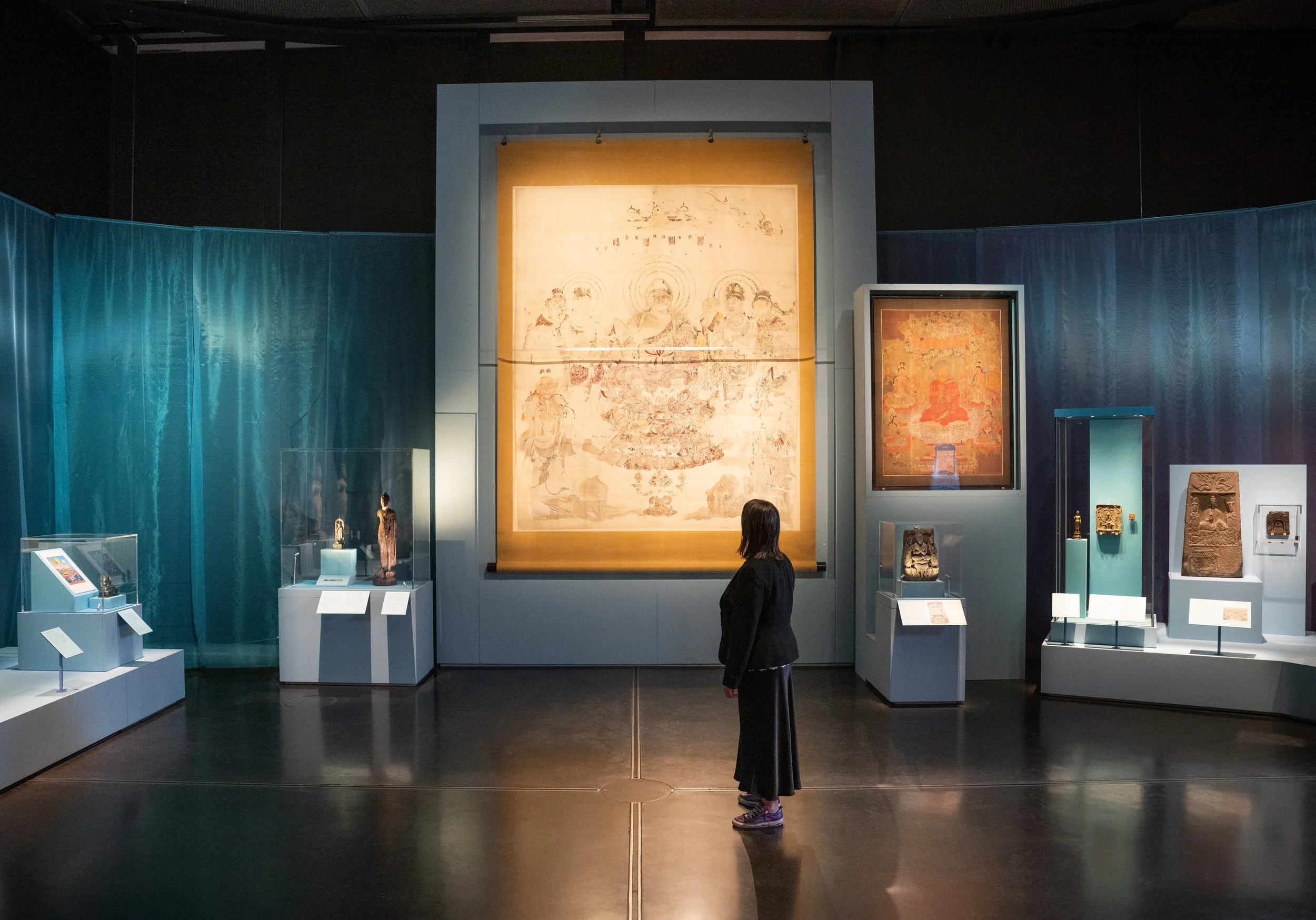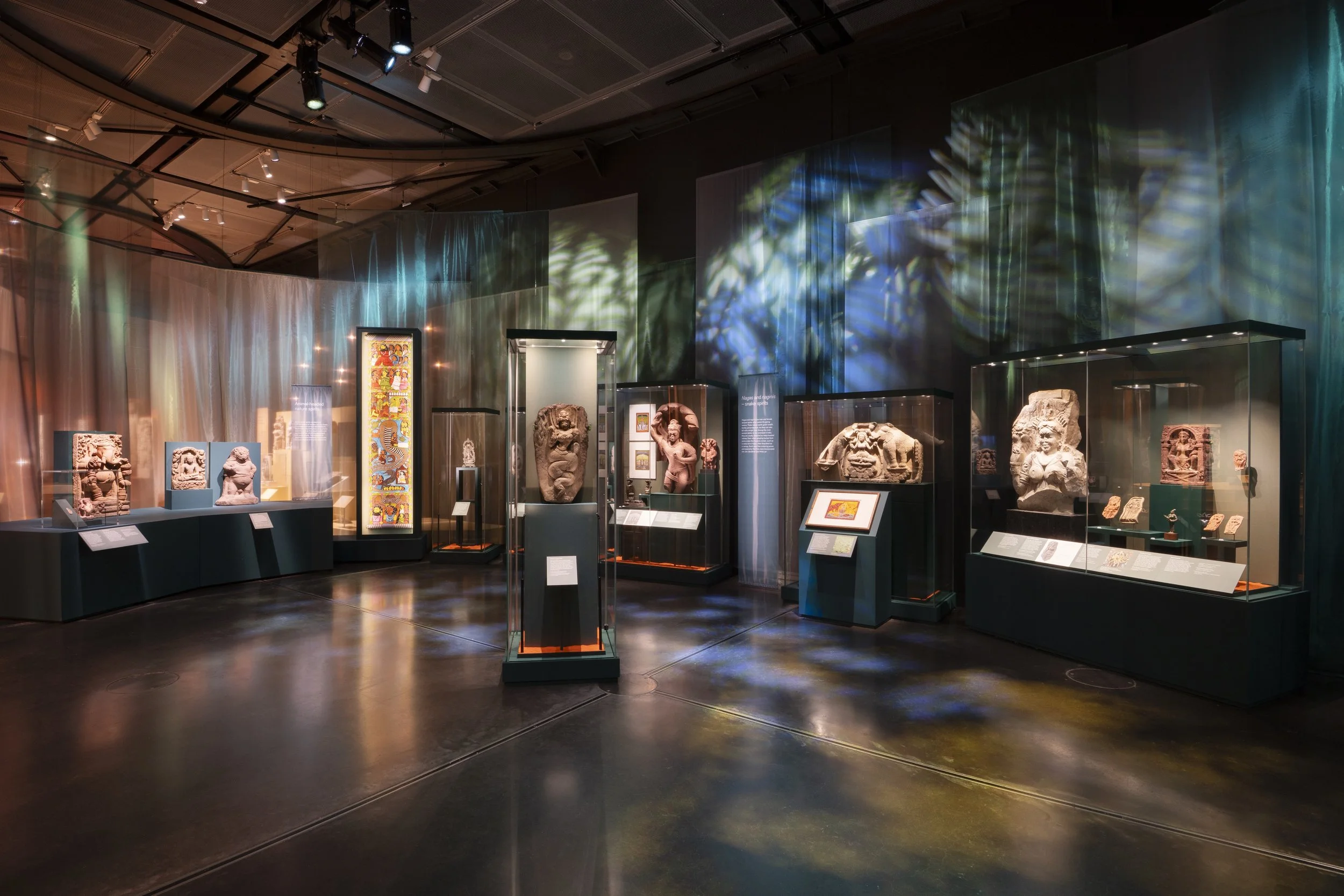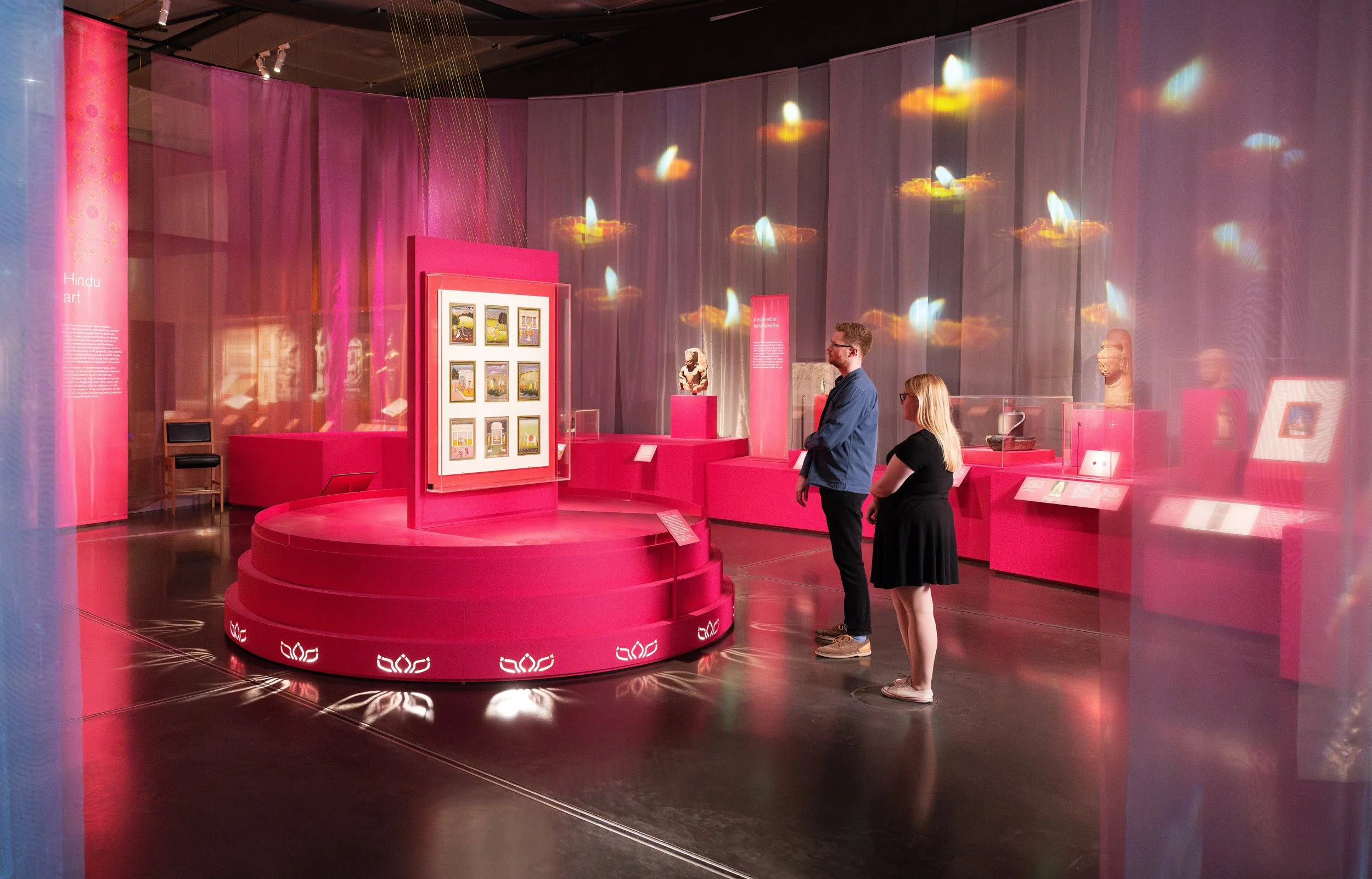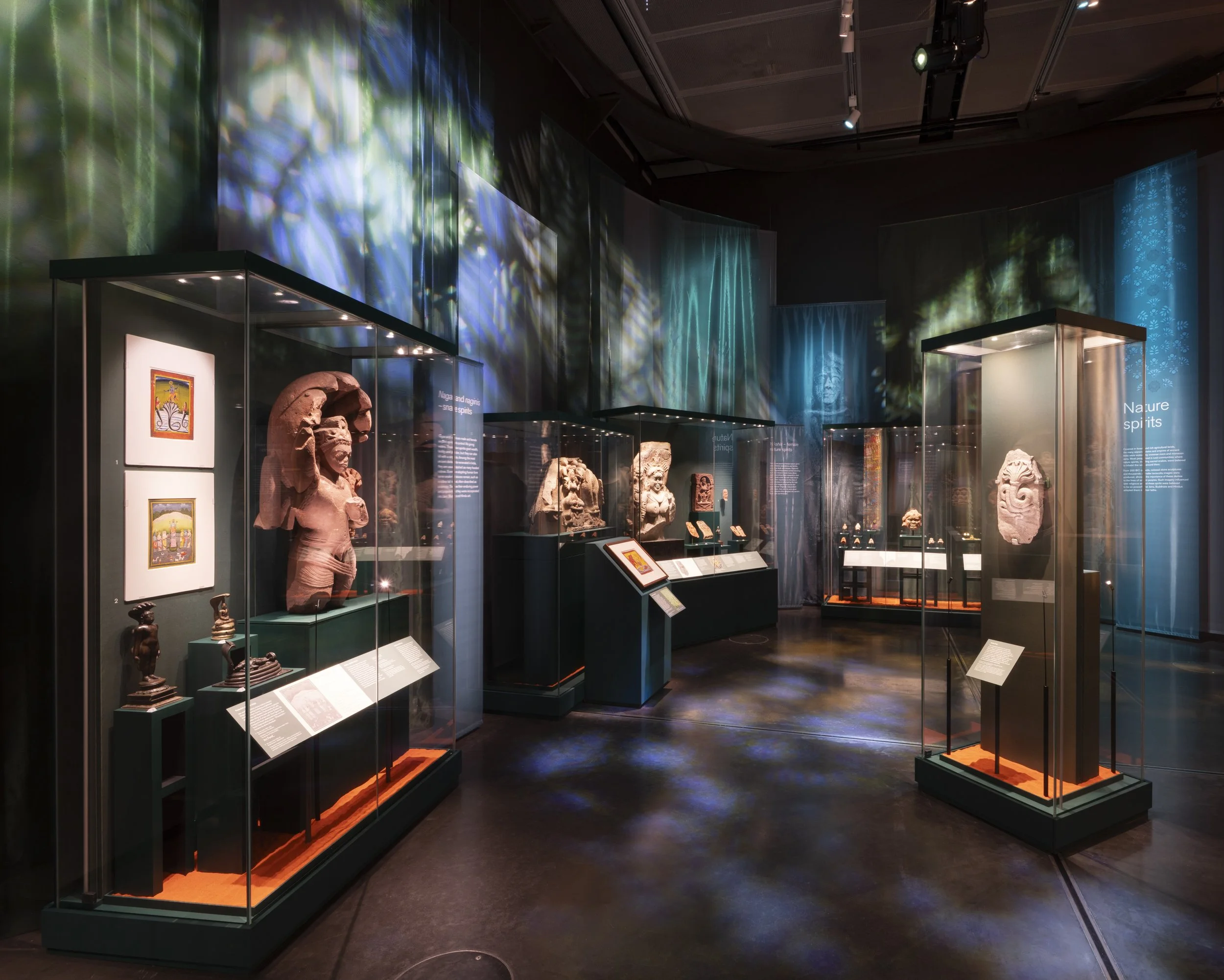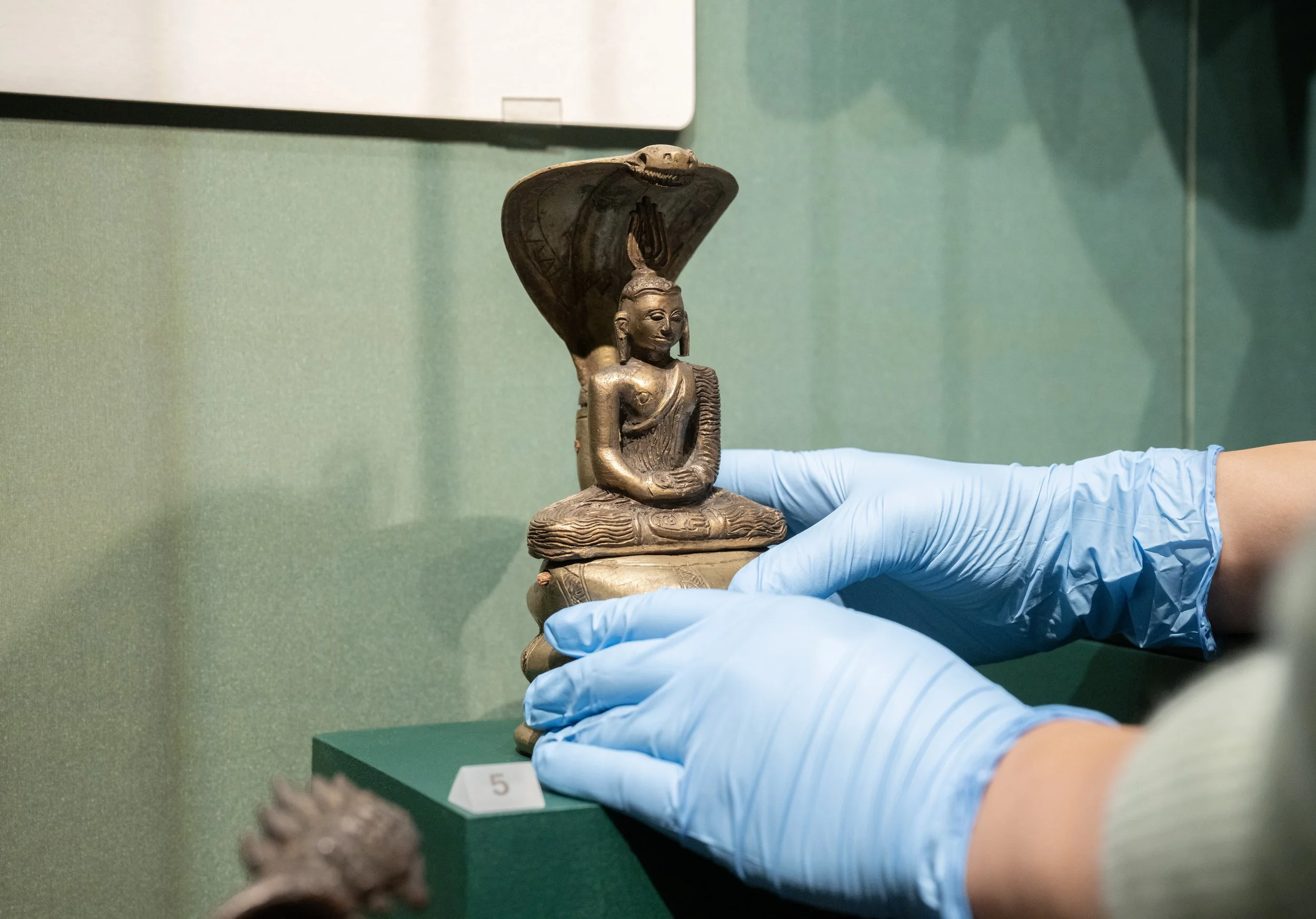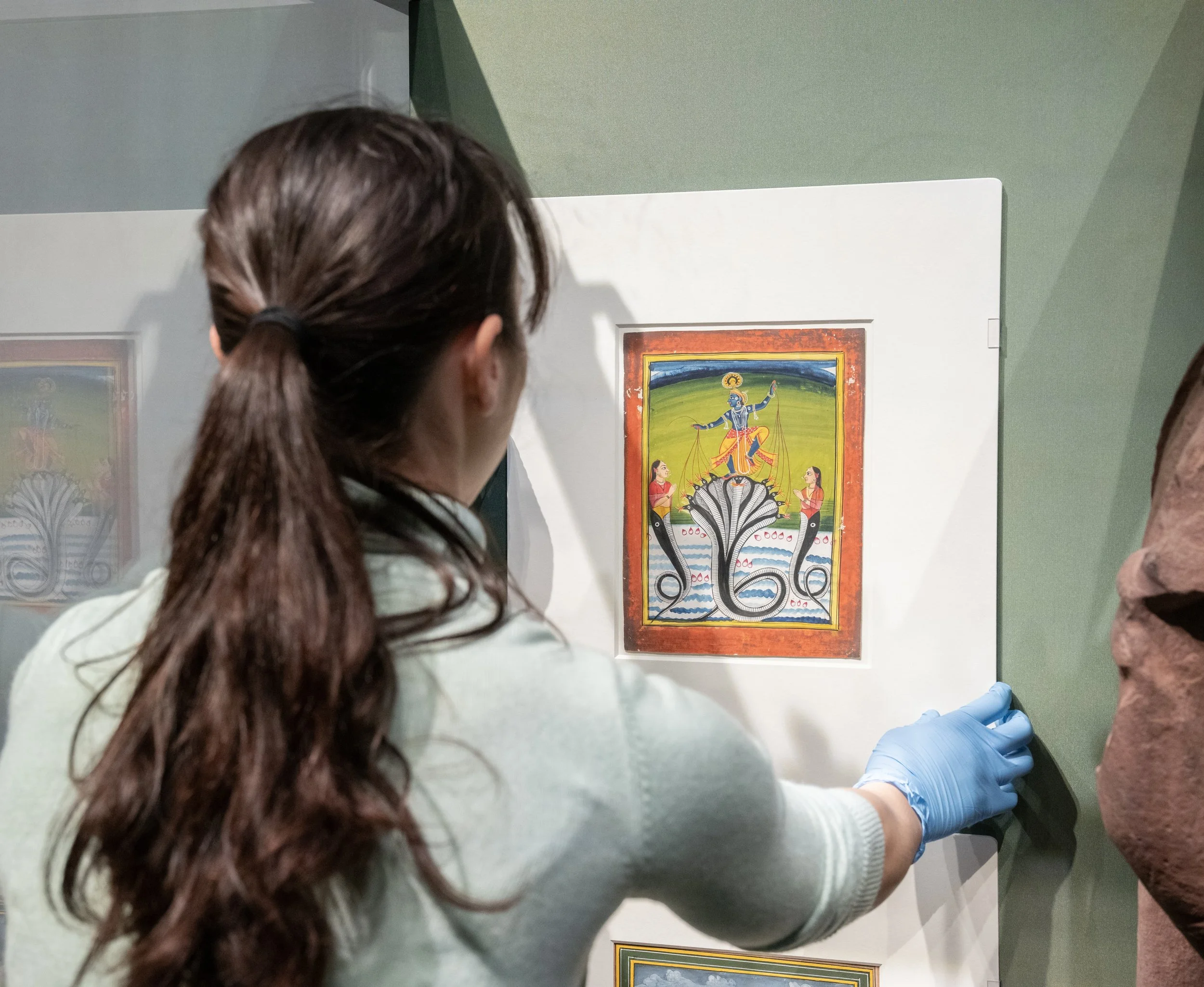Ancient India: Living Traditions at the British Museum
Ancient India
Living Traditions
May 22, 2025 — October 19, 2025
Where does the image of the beloved and playful Hindu god Ganesha, with his elephant head and rounded belly, originate? What inspired depictions of the serene Buddha and Jain enlightened teachers?
Reaching back more than 2,000 years, this new exhibition explores the origins of Hindu, Jain and Buddhist sacred art in the ancient and powerful nature spirits of India, and the spread of this art beyond the subcontinent.
One of the first major exhibitions in the world to look at the early devotional art of India from a multi-faith, contemporary and global perspective, it will highlight the inspiration behind now-familiar depictions of the deities and enlightened teachers of these world religions – and how they were shared across the Indian Ocean to Southeast Asia and along the Silk Roads to East Asia.
Colourful, multi-sensory and atmospheric, this exhibition was developed in collaboration with an advisory community panel of practising Hindus, Buddhists and Jains. These living religious traditions and their sacred art are now integral to the daily lives of almost two billion people around the world including in the UK. Key loans from our community partners help to tell this contemporary story.
The exhibition will showcase more than 180 objects – including sculptures, paintings, drawings and manuscripts – from the South Asian collection at the British Museum as well as generous loans from national and international partners. It will highlight provenance, examining the stories, from creation to acquisition by museums, of every object in the show.
From the symbolic footprints which preceded portrayals of the Buddha in human form to the cosmic serpents incorporated into Hindu art and the nature spirits who attend Jain enlightened teachers, this compelling exhibition tells the ancient stories behind these living traditions.
Exhibition Highlights
